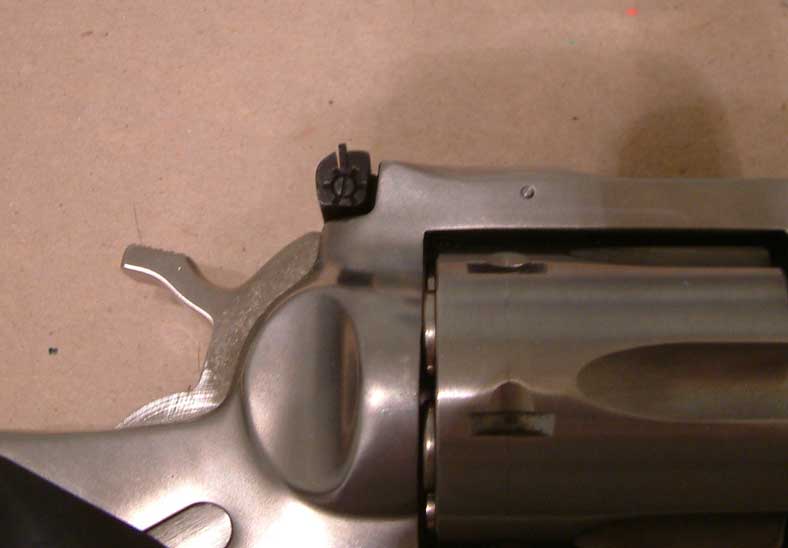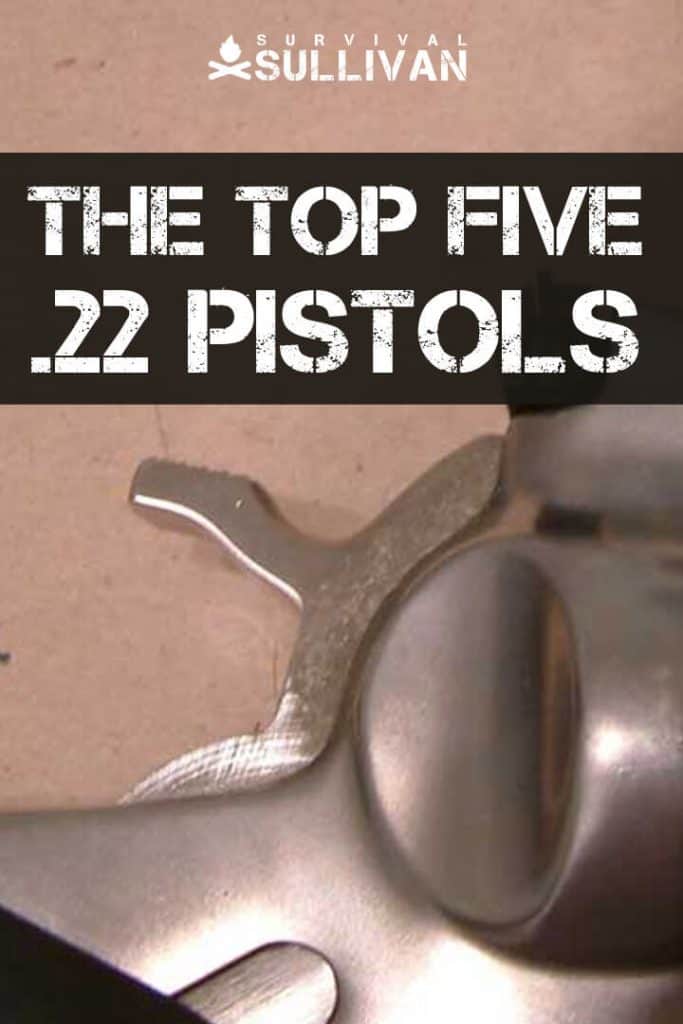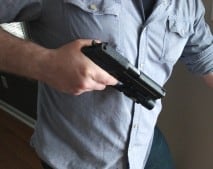If you could only have one pistol to cover most eventualities in a survival role, what would it be? What is one gun that can do almost anything you need a handgun to do, do it efficiently, and is one that almost anyone can handle? Imagine no more, we have such a gun: the versatile .22.
It’s true. While it does not excel at everything, a good .22 LR pistol will take care of everything from low cost practice and honing of fundamentals to the hunting of small game and even self-defense. Few are the tasks that a .22 cannot handle in a pinch.
It is the rare shooter who has no need for a .22 or will outgrow it. In today’s article, I’ll be writing about all the good .22s can do for you, from peacetime practice to legitimate survival and even self-defense roles for these rimfire workhorses.
I will also be offering my recommendations for the nicest .22 pistols you should consider the next time you are shopping for smallbores.
Table of Contents
Genesis of the Classic Rimfire
The .22 LR is ubiquitous, and one of the oldest continually mass-produced cartridges in the world, and overwhelmingly popular. While there are other modern, tiny rimfire rounds, the .22 LR is the most prolific by a huge margin.
The .22 LR was developed in the late 1880’s. I say developed because saying “invented” would be a bit of stretch, since the .22 LR sprang from a mash-up of two extant rimfires that are its closest relatives. This fortuitous union resulted from loading the case of the .22 Long with the bullet of the .22 Extra Long.
The result was the wonderful rimfire we all still cherish today, and it in no time flat became the ideal in-between rimfire. The .22 LR steadily eclipsed the other .22 rimfire cartridges of the day thanks to its ideal performance in handguns and rifles alike.
There is no way to calculate the impact this diminutive round has had on the shooting public and the firearms industry at large. Countless people young and old learned to shoot with .22’s.
It is common knowledge and certainly wise starting a beginner out on a .22 LR: The guns themselves are easy to handle, being most often lighter than guns in competing calibers.
The cartridge generates very little recoil and is relatively quiet compared to other, more potent rounds. With this sedate handling, even a beginner can quickly feel comfortable and focus on learning their fundamentals.
Beyond practice and plinking, the .22 LR is a fine small game round, and will harvest all kinds of critters without destroying too much meat or damaging an otherwise nice hide.
.22s also make acceptable self-defense guns, provided that they are for a special purpose, like for someone who cannot handle a larger or more powerful firearm.
They are usually derided in this role by gung-ho gunners, but a .22 LR is more than capable of inflicting serious and lethal wounds, and will do so consistently enough in a civil setting to be declared adequate as a defensive arm.
Of the .22 LRs surviving cousins, the .22 Long mentioned earlier and the .22 Short, both are still around, though far scarcer than their breakout superstar sibling rimfire.
Just take a glance at the rimfire section of ammo the next time you are in the gun or sporting goods shop and you will see mountains of .22 LR and hardly a box or two of the others.
This universal popularity is a boon for more than just reasons of availability: there are also dozens and dozens of loads for the .22 LR, everything from specialty rounds to hot-rodded defense ammo, and all are found readily at well-stocked gun shops.
The .22 LR handgun is truly one platform that can do it all.
.22 LR Handguns in a Survival or Defensive Context
Your .22 is not just a mass-murderer of bottles and cans. This cartridge and the guns that chamber it are surprisingly capable of much more than that, enough to make them serious contenders for dedicated BOB guns or even primaries for survival.
No, they are not true service handguns, but they don’t have to be. I am not advocating for them as police or military sidearms, and if you want a proper fighting handgun you should look at something more potent.
Consider the ballistic performance of the average .22 LR load. Most will greatly mitigate the chance of overpenetration and are far quieter (even unsuppressed) than any centerfire caliber.
This makes .22s a good choice in any populated setting, especially urban and suburban environs, for unobtrusive pest disposal of any kind, two- or four-legged. Touching off more impressive calibers will definitely attract attention.
While even suggesting personal defense with a .22 is often greeted with derision by haughty shooters, and one that can handle a larger caliber usually should, a .22 can be ideal in the right circumstances.
The guns themselves in nearly any form are very light, have minimal recoil and hold an adequate number of rounds while being a breeze to shoot accurately and fast.
This is of course a boon for anyone with an injury or just lacking in strength that renders them less than confident with beefier guns, but it also makes a compelling case for more advanced shooters.
A tiny .22 pistol will still hold a fair number of rounds making them ideal for backup guns that can still be shot to a high standard easily compared to small guns in larger calibers.
Or, you could take a .22 LR in a different direction as a primary weapon: a modern .22 tricked out to the gills with a suppressor, optic and perhaps even a flashlight will give up nothing in capability to similarly equipped pistols (except as it applies to ballistic performance), and will be a frighteningly quiet, accurate and easy to shoot handgun.
This can be an especially useful tool for low-profile work while remaining very light and nimble compared to a more powerful but heavier and bulkier handgun.
Plus, any .22 pistol affords you the ability to carry a metric ton of ammo for very little weight, an important consideration for a pistol you plan to run out of a BOB or for an indeterminate-duration event.
Last and certainly not least, you must not underestimate the .22’s ability to help make you better: for practice or refinement, the little rimfire is priceless for delivering high-fidelity practice reps very cheaply.
If you have a .22 pistol that duplicates your larger caliber handgun or closely mirrors it in function you can build skill with that one while you practice with your .22.
Unless you are made of money or reload like a madman, a .22 is cheap enough to allow you serious high volume practice for pennies per round, compared to the .30₡ plus of any “service” round.
And don’t underestimate the effect that blast and recoil can have on shooters, even experienced ones: both are apt to hide or conceal from notice any bad habits you have, and also more likely to start ingraining a flinch when getting many reps in. It will take a ton of .22 shooting to do the same, if it happens at all, since they are such mild shooters.
Rimfire Myths, Method and More
As mentioned above, the .22 LR is not an ideal defense round, but it does work adequately, and will work better if you educate yourself on best performance and practices and erase a few myths from your gray matter.
MYTH: .22s and other rimfires are unreliable compared to centerfires.
Bullhonkery, though there is a hair of historical veracity in this one. Way, way back when, long ago, rimfire priming technology was not quite up to the lofty standard we have set today.
One of the principal advantages of centerfire priming technology when it was invented was its greater reliability. Those days are long past, and if you buy a modern, quality .22 pistol and load it with modern, high quality ammo (i.e. not cheap bulk ammo) you will have a package that will function as well as any modern gun can be expected to.
MYTH: .22’s are ideal defensive guns since the bullet will bounce around in the shootee’s body.
Utter, utter nonsense. Though a lurid and intriguing tale, this myth has been propagated by many professional and amateur assassins choosing .22 pistols.
This is not due to any special and unexpected lethality of the bullet, but due to their small size and easy concealability.
.22 bullets travelling through the body may glance off bones, but do not bounce around to and fro carving a zigzag wound channel. Because physics still apply.
FACT: .22’s require careful bullet selection for good effect.
Yes, they do. Most .22’s are tiny, fragile bullets compared to larger, sturdier rounds. They can quickly deform or shed weight once they strike something hard, and hollowpoint performance is always a little hit or miss, and many times they do not expand at all.
That’s okay under the circumstances we have chosen the round for, and we accept those limitations so long as we can assure adequate penetration.
To do this, we generally want a copper plated, high-velocity load, with the ideal rounds often being the common CCI Velocitor or Mini-Mag. Try to avoid using plain lead round nose for defensive work.
You don’t get a pass on ammo selection just because you have chosen/settled on a rimfire. Make sure you stoke your pistol with the best possible ammo for the task at hand.
The Top Five .22 Pistols
1 – Ruger 22/45 Lite Mark IV
Ruger has been the manufacturer to beat when it comes to .22 pistols, and they continue to refine and innovate on a yearly basis.
While they have always been great all-around handguns for practice, plinking and even small game hunting, their models in the ever-popular 22/45 line up from the past several years bear special mention.
The 22/45 lineup has been very popular among practical shooters because its size and control layout closely mirrors other, fullsize pistols: the mag release, slide release, the works.
They have always been pretty light compared to those larger guns, but aside from the weight difference they shot and handled pretty similarly to a “real” gun, making them good training pistols that are highly reliable.
The latest versions though are packed with accessory mounting features that you should take note of: underbarrel and receiver top rails, threaded muzzles and high-visibility sights.
That means you can kit out one of these righteous little rimfires with an optic, suppressor and laser or light and turn it into a frighteningly quiet, high precision shooting machine that weighs less than your .45 at home.
The 22/45 pistols also enjoy tremendous aftermarket support meaning you can customize and optimize them to your heart’s content.
Oh, and not for nothing, the latest Mark IV versions have a far simpler takedown procedure than any previous version.
You might think that is a small thing, but you can ask anyone who has owned one of the earlier marks about it and they will happily tell you why you are wrong.
Accurate, reliable and capable of mounting all the accessories you would otherwise want on a defensive handgun, the 22/45 Lites are my favorite .22 handguns, and one that definitely deserve your consideration for a BOB or survival pistol.

2 – Ruger GP100 (Mod. 1766)
The next (and not the last) Ruger on our list, Ruger’s GP100 series are most known for being massive, tough and heavy .357 Magnums.
You may not know that for a few years Ruger has also been chambering this beastly wheelgun in the petite .22 LR. While that might seem like a strange pairing at first, this matchup has serious benefits.
This is one .22 revolver option that carries a respectable 10 rounds in a bulletproof, easy to service action.
While the GP100 is legendarily strong and it would take several bazillion rounds of .22 LR to even begin to wear it out, that level of durability is cold comfort if you are choosing a pistol for serious heavy duty use.
With a drop-out trigger assembly and relatively simple action compared to the standard S&W offerings, the GP100 also has advantages for those who want to DIY service their wheelguns, allowing easy replacement of most parts with minimal fitting.
The rest of the options are no less useful: good, clear adjustable fiber optic sights, and the standard peg frame that allows wide latitude in the size and type of grips you may mount round out an already great shooting and user-friendly gun.
3 – Ruger LCRx (Mod. 5435)
Ruger’s compact, half-plastic LCR revolver line is a shock to the system of Old Guard wheelgun fans.
The flyweight little guns made quite a splash in the snubbie segment when they were introduced, not only for their half polymer construction but also for their remarkably good triggers by any standard.
With an aluminum alloy upper frame and barrel shroud married to a cylinder made of the same all atop a plastic fire control housing and grip assembly, the LCR family is as light as you can get without going into exotic and expensive rare alloys like scandium.
This LCRx variant is an 8-shot .22, and features a 3” barrel, great adjustable sights and a 3” barrel, allowing you to take single action shots with tremendous precision if needed.
Quite the boon for hunting, and in my mind all of those features together make the LCRx in .22 LR the ultimate kit gun, and plenty-strong medicine on defense.
Don’t let the plastic parts discomfort you: the LCRx is Ruger-tough, a great shooter, and so light it is begging to be carried on your hip or in your pack.
One of these guns and 300 rounds will weigh less than a modest hardcover book, and fit in the same space. Its awesome price only makes it more attractive.
4 – Walther P22
The P22 remains one of Walther’s best selling guns at almost 20 years since its introduction. Any gun that has that much staying power on the “Shiny Object Syndrome” addled commercial gun market has some serious chops. I know the P22 sure does.
The P22 famously set the stage for so many other .22’s to follow its winning formula: make a .22 pistol in a format that mirrored a service pistol, only smaller.
The P22 has the slide release in the usual position, ambi-mag releases in the paddle style just like its big brothers in the Walther line, and a threaded barrel for suppressor mounting along with a tiny accessory rail just big enough for a compact laser sight.
The only feature that might snag someone already keen on larger guns is the addition of a slide mounted safety, though this pistols lean and compact frame makes activating it much easier than larger pistols with that control in the same location.
The P22 is a great training tool, but is reliable and robust enough to be used as a primary pistol.
Its only weak point is that it greatly prefers high-velocity ammo and is just slightly more ammo-sensitive than the Ruger 22/45’s I talked about above.
5 – Smith & Wesson M&P22 Compact
The junior member of S&W’s popular M&P line of handguns, the compact .22 version retains all of the ergonomic excellence of those guns in a shrunken form factor.
Of all the guns on our list, the M&P22 most closely mimics its larger caliber cousins, and that makes it a shoe-in for those of you wielding M&P’s in 9mm, .40 or .45.
The M&P22 has clear, combat-style adjustable sights, a manual thumb safety and a modest accessory rail on the dustcover that can actually fit a fair assortment of lights or lasers, unlike many other small .22 handguns with postage-stamp sized rails.
This rimfire also features a threaded barrel that does not protrude past the slide, just like the Walther P22.
A great companion to a full-power M&P, or a good gun all on its own. The M&P22 feels and handles just like the big boys.
Conclusion
Almost every shooter needs a good .22 pistol and almost as many have one. While they are great for practice and refining your skills, a reliable .22 is capable of so much more, from hunting to serious self-defense.
From their light weight, small footprint and tiny, lightweight ammo, a .22 LR pistol is in many ways an ideal survival and bug-out gun. Don’t shoot yourself in the foot and discount these rimfires out of hand.


Charles Yor is an advocate of low-profile preparation, readiness as a virtue and avoiding trouble before it starts. He has enjoyed a long career in personal security implementation throughout the lower 48 of the United States.

The only (acceptable) reason to shoot a person is to stop them RIGHT NOW from doing what they are doing because what they are doing would be irrecoverable to you or someone else. If it is OK to stop them 5 minutes from now, then shooting them is not appropriate. The .22 LR is not at all good at causing an assailant to stop immediately (sure it will, in some cases, but then so will a whistle). Thus it should never be one’s first choice for defensive use.
That said, there are cases, some of which you listed, where it would be “better than nothing” as a backup or required alternative to something effective. And with it’s training, unobtrusiveness, fun and small game benefits, yes, everybody with any interest in guns should have at least one.
How could you leave out Rugers Mark2 pistols? They preceded the 22/45s and I am sure have many more iut in the market.
Ruger SR 22 love this gun and so does my wife and if your life is in danger just keep pulling the trigger